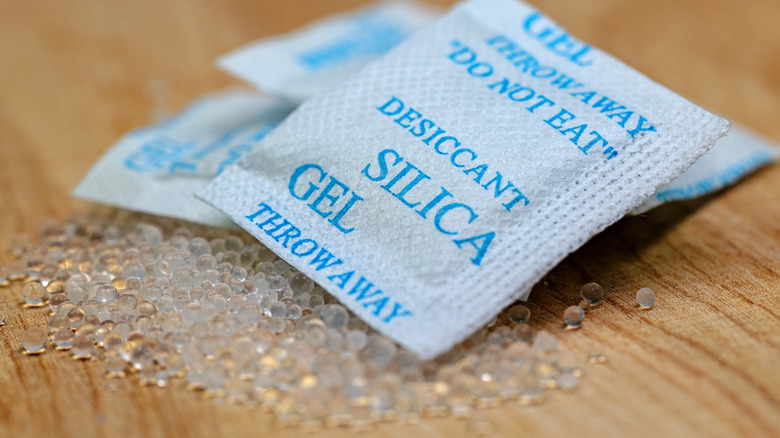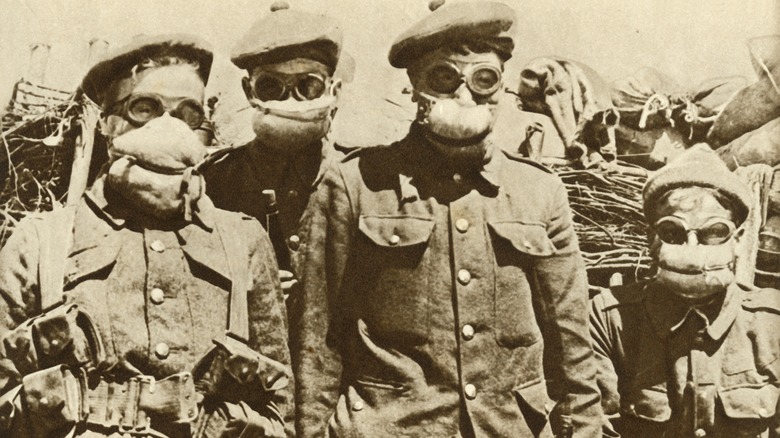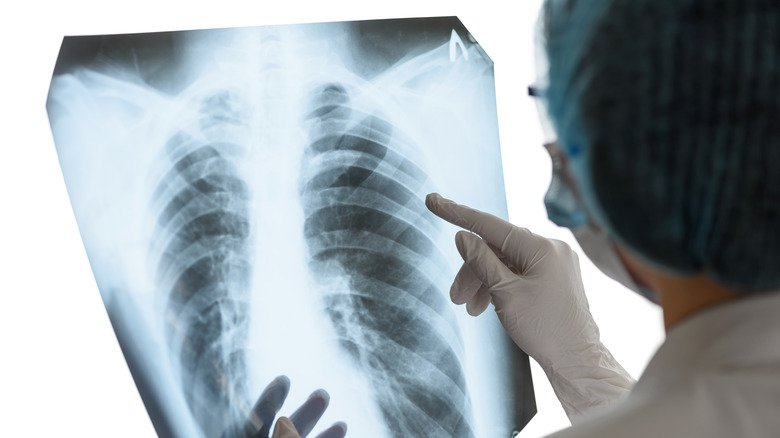What Would Really Happen If You Ate A Silica Gel Packet?
There's something delightful about the almost candy-like crystalline orbs nestled inside one of those crisp silica gel packets found packed with some products. With "DO NOT EAT" warnings stamped all across the tiny square, it's almost like it's tempting you. "What if you broke all protocol and slipped a few of those BB-like pellets into your mouth?" your conscience whispers.
The fact is, you'll probably be fine; the stuff inside those packets is non-toxic. Regardless, it is still not recommended to eat the silicic acid found within the white sugar-packet-esque packaging.
According to North Carolina Poison Control, silica gel packets are often used in packaging that's home to new electronics, dehydrated foods (like beef jerky or fruit), clothing accessories (mostly shoes and purses), or pill bottles. The reason silica packets are used for water-sensitive products is because the gel works as a drying agent to absorb any moisture that might enter packaging and destroy the goods (per Healthline).
Some manufacturers choose to coat their silica gel with cobalt chloride, a type of chloride that changes color based on how much humidity is present. While silica gel on its own is non-toxic to humans, cobalt chloride is a "suspected carcinogen," according to Noah Chemicals, which means any silica gel with a blue-ish coating should be avoided at all costs.
Silica gel used as a wartime aid
Silica gel has been around for hundreds of years, dating back to the 1640s. Prior to getting patented in 1919, the gel was considered to be a "scientific curiosity" (via New World Encyclopedia). Like many innovations from the early- to mid-1900s, silica gel founds its place in society through war-necessary evolution.
During World War I, silica gel was often used inside gas masks (like the ones pictured above) to limit moisture and absorb harmful vapors. Twenty years after Walter A. Patrick, a chemistry professor at John Hopkins University, patented the gel, the government, scientists, and manufacturers alike were able to find uses that spanned beyond military equipment. Still, it was a powerful tool utilized during World War II as well.
According to New World Encyclopedia, " ... silica gel was indispensable in the war effort for keeping penicillin dry, protecting military equipment from moisture damage, as a fluid cracking catalyst for the production of high octane gasoline, and as a catalyst support for the manufacture of butadiene from ethanol, feedstock for the synthetic rubber program." Pretty incredible that the stuff you find in cat litter and spices played a crucial role in the war effort to defeat the Nazis.
Beware of too much silica gel
In the end, the biggest threat silica gel poses to your system is a choking hazard. If you, your child, or a pet accidentally ingests a bit of the clear powder, the odds are nothing will happen and you'll continue living your life just the way you had been before.
However, it's not recommended you go hog-wild with the stuff. Why? According to Mental Floss there are some hidden dangers besides choking. For one, ingesting something that works as a moisture-absorber can cause dehydration. Accidentally eating a few pellets won't do you much harm, but if teens start doing TikTok challenges wherein they shovel pounds of silica gel into their gullets, well, that would be bad. (Please don't do this.)
On a more serious note, lung diseases that sprout from breathing in too much silica powder (mined from quartz in rocks and sand) have plagued individuals for hundreds of years. In fact, it is said to be the first occupational hazard. People who breathe in copious amounts of the stuff over the course of years are susceptible to something called silicosis, or potter's rot. (It's known to afflict ceramics workers.) The Free Dictionary describes silicosis as "A progressive disease that belongs to a group of lung disorders ... marked by the formation of lumps (nodules) and fibrous scar tissue in the lungs." So while silica gel, and its non-toxic properties, may seem pretty innocuous, as with all things in life, too much of it a bad thing.


